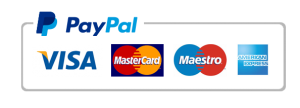Homeland security and defence enterprise from the basic equation of risk
Homeland security and defence enterprise from the basic equation of risk
This is an assignment that discusses the Homeland security and defence enterprise from the basic equation of risk. Also, the assignment talks about the benefits that surround the enterprise.
Homeland security and defence enterprise from the basic equation of risk
Essay 1:
Firstly, the basic equation for risk is defined as R = ƒ(C*V*T) where R is the level of risk. C is the consequences (public health, our economy, government action, public confidence in our institutions) of an attack. V is an assessment of the vulnerability of a potential target (how hard or easy it would be for it to be hit by terrorists). T is the threat or the likelihood that a specific target will suffer an attack or disaster from a specific weapon. The Department of Homeland Security has stated that it will apply risk management principles to homeland security operations. Also, it has stated that “Ultimately, homeland security is about effectively managing risks to the Nation’s security” (DHS, 2010, p. 2).
Drawing upon your class readings and additional research:
Examine how usage of risk management is by the homeland security enterprise. Additionally, how that use benefits such aspects as resource allocation, strategic planning, or any of the multitudes of other homeland security issues.
Essay 2:
Secondly, in your readings, you have been provided a variety of definitions for the term homeland security. Additionally, the national strategies and readings have talked to the difference between homeland security and homeland defense. Drawing upon your readings and other class materials, craft two columns; one labeled Homeland Security and the other Homeland Defense.
Essay 3:
Thirdly, critical infrastructure definition in the National Infrastructure Protection Plan as “Systems and assets, whether physical or virtual. So, it is vital that the incapacity or destruction of such may have a debilitating impact on the security, economy, public health or safety, environment, or any combination of these matters, across any Federal, State, regional, territorial, or local jurisdiction” (DHS, 2009, p. 109). One can reasonably presume that protection of these assets is vital to the well-being of the United States and as such, is an essential element of homeland security. Drawing upon the readings provides your assessment of the capability of the nation’s infrastructure protection program to ensure the survivability of its critical infrastructure.
Essay 4:
Lastly, provide an examination of the various elements that comprise the intelligence community from local law enforcement to national agencies and how each of those entities contributes to the development of homeland security intelligence. Lastly, your examination of the question should include the issue of domestic versus foreign intelligence.

